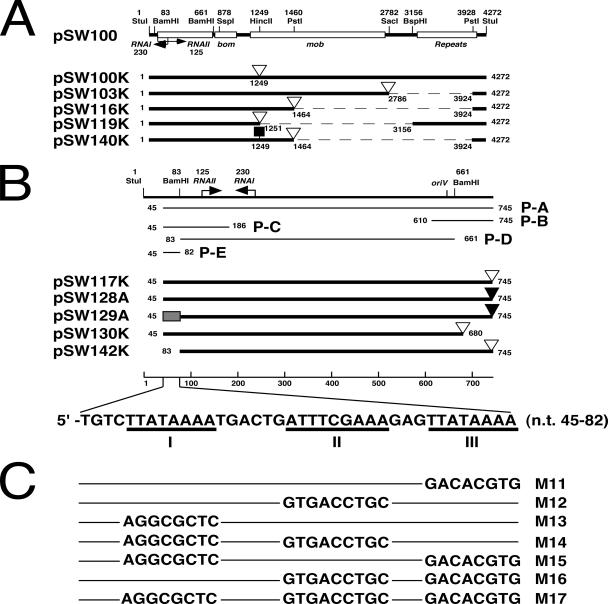FIG. 1.
Plasmids and DNA probes. (A) Plasmid pSW100 has a replicon that is homologous to that of ColE1. The plasmid also contains a bom region, four mobilization (mob) genes, and five 132-bp perfect repeats. Numbers denote the nucleotide positions from the StuI site in pSW100 (14). Plasmid pSW100K contains the entire pSW100 sequence and a Km resistance gene (open triangle) that is inserted into the mob region. Plasmids pSW103K, pSW116K, pSW119K, and pSW140K are deletion derivatives of pSW100 that contain a Km resistance gene. Plasmid pSW140K was constructed by inserting a carotenoid synthesis operon (filled square) in pSW116K. Dashed lines represent deletion. (B) Plasmid pSW117K and pSW128A contain the region between nt 45 and nt 745 in pSW100. The region between nt 45 to 82 (filled box) in pSW128A was replaced with the M17 sequence (C) to yield pSW129A. Plasmids pSW130K and pSW142K are deletion derivatives of pSW117K. P-A, P-B, P-C, P-D, and P-E are the DNA fragments that were used in DNA-binding studies. P-E region contains three A-T-rich sequences: regions I, II, and III. (C) The sequence of regions I, II, and III of the P-E fragment in pSW117K was mutated to produce mutants M11 to M17. Filled triangles, Ap resistance gene.

